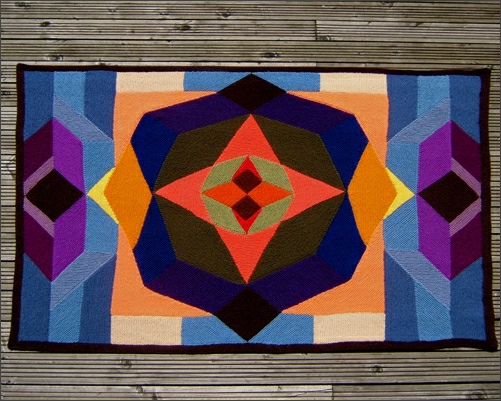




The birth of Metafourmosis was completely different from any of the other afghans. Most of the others arose from the desire to teach a particular piece of Maths either by showing pupils a representation of a mathematical idea or by asking them to discover something from a completed afghan.
A class of 14 and 15 year olds had been having great difficulty in identifying the
different four-
A box drawn in 3D has parallelograms on the side -
More recently I have taken Metafourmosis into another group of older pupils and was given another insight into someone’s thinking. The design is symmetrical and in the centre it has two squares, two kites and two arrowhead kites. These are surrounded by four identical rhombuses. Because the rhombuses have equal sides, their outer edges form a regular octagon. One particular boy pointed out this octagon but he could not see the shapes in any other way. It took a great deal of shouting, cajoling and argument before he began to realise what some of the others were seeing.
This may seem a very trivial matter but it has enormous implications for the use of drawings in text books, exam papers, instruction manuals and many other walks of life. We all tend to assume that everyone’s interpretation is the same.
Metafourmosis is not exactly the same as the worksheet. The angles of the worksheet would have been difficult to knit so the design was adapted to fit on a grid to make it easy to calculate the angles.
Our basic knitting rules, creating 45 degree angles were adapted, working on the principle that if a shape is to be twice the height it has to lose (or gain, depending on the direction) stitches at half the rate it did before. For a shape to be a third of the original height it has to loose its stitches three times as fast. It was then an easy task to create shapes to cover a grid. We chose a different colour for each type of shape and used different shades for the various sizes and variations within each group. For example all squares were shades of brown, all trapeziums were shades of blue.
